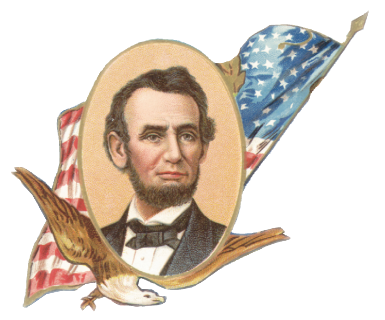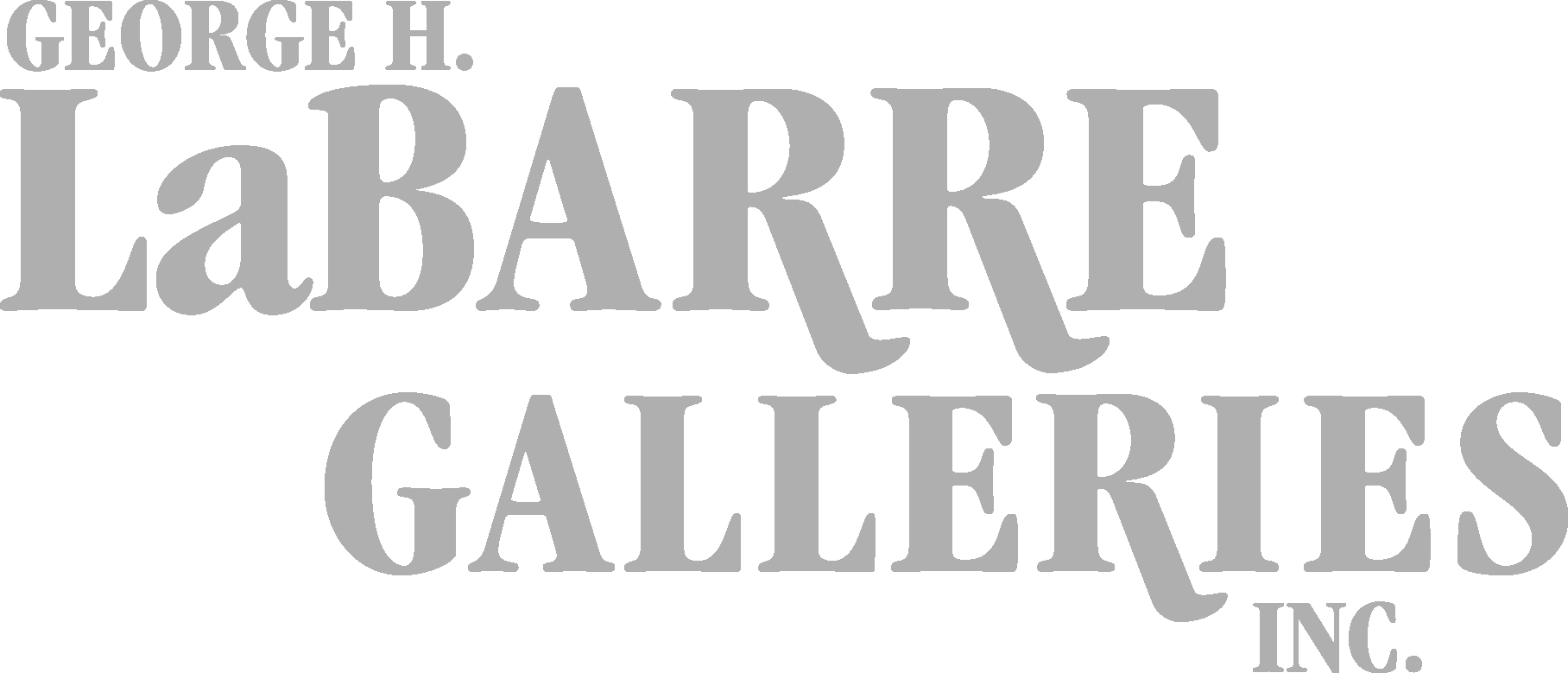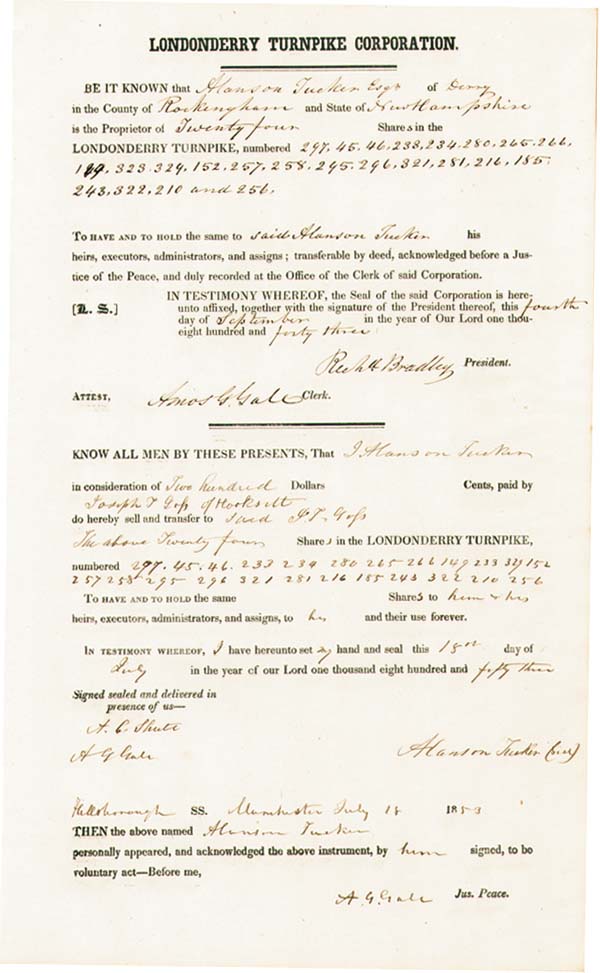

We often find it exciting to go on line and print out history on various stocks, bonds, and other collectibles such as autographs. There is such a wealth of information now at our fingertips. This brief article was published in the Fall of 1982.
Londonderry Branch Turnpike Corporation
We have regularly offered readers of the LaBarre Newsletter fresh insights into the historical backgrounds of persons, events, companies, and the like as well as scripophily in general. It is our firm belief that the historical importance of stocks and bonds and the people who made them is one of the field's most compelling and intriguing facets. Historical appeal unquestionably adds much to the lure of collectible stocks and bonds. With this background in mind, we offer a fascinating look at a most interesting and possibly unique stock certificate from Londonderry Branch Turnpike Corporation, which was recently acquired by George H. LaBarre Galleries.
Toll roads, or “turnpikes," were certainly not a novel concept by the time America achieved independence in 1783.Tollroads, or those roads maintained either entirely or at least in large part by fees or “tolls” collected from users, originated in mid-fourteenth century England, and reached their level of greatest popularity and use by the early nineteenth century.
In this country, toll roads did not make their appearance until the post-Revolutionary War period. The first opened for business in Virginia in 1785, with other roads in Pennsylvania and Connecticut following in1792. Basically, toll roads represented a fledgling effort by private entrepreneurs to come to grips with a woefully inadequate road system. Roads would only be built and improved decades later through projects funded by local, state, and federal taxes.
Like canals nearly a half-century later, turnpikes went through a boom period of popularity and development. During the years 1790-1810, turnpike corporations were established at a rapid pace. In the New England region alone, some 170-turnpike companies were organized with a total capitalization of more than $5,000.000, a staggering amount of money for the times. Some 3000 miles of roads were constructed. Perhaps the most famous toll road constructed was the legendary Philadelphia & Lancaster Turnpike which ran 62 miles and cost $465,000 to build (see: the "Recommended Purchases” section in Issue No. VII of the LaBarre Newsletter for a full discussion of this historic turnpike). By the 1840’s toll roads, like canals, were supplanted by the nation's growing railroad system, and quickly faded from widespread usage and development.
Londonderry Branch Turnpike Corporation incorporated in New Hampshire in 1812, hardly an auspicious year to begin any commercial enterprise in the United States. The proposed branch was to run a distance of about a dozen miles from Hopkinton to Bow to Dunbarton, where it would link up with the main Londonderry Turnpike Road located in the Concord area.
In its charter granted by New Hampshire, the state empowered the corporation to establish as many gates or "turnpikes" as necessary to collect sufficient fees to operate the road. Specific fees for persons, vehicles, and livestock were spelled out in great detail in the company's charter. For each mile of toll road used, every ten sheep or swine were charged one-half cent, every ten “neat" cattle one cent, ten horses or mules, one cent, any carriage pulled by two horses, three cents. This list went on with many variations listed in the fee structure. Moreover, those who attempted to evade tolls by leaving the road to bypass the tollgates were subject to fines levied at a level of three times the normal toll fees. Persons using the toll road to travel to church, funerals, or on military or militia service were exempted from all fees.
The Londonderry’s charter and bylaws provide a fascinating look into the birth of capitalism in the United States. The folio sized certificate illustrated here is quite plain in appearance, and certainly reminiscent of all financial documents of the period However, behind that simplicity lurks a story as interesting and as exciting as the development and expansion of this country, of which it was such an early and integral part.
Originally Published and Printed by G.Labarre, The LaBarre Newsletter, Issue 8, Fall1982




























Ebay ID: labarre_galleries